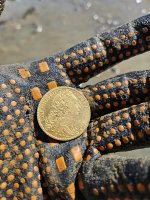I have plugged the following sentences taken from book written in 1790 into Google Translate and have a pretty good general idea of what is meant:
"El alboroto de la venida de la flota, se ha templado con la noticia del suceso. Escribe el Almirante, Juan de Campos, que habiendo navegado con felicidad al canal de Bahama, en llegando al parage de la Bermuda, se levanto la mas terrible tempestad que han visto aquellos mares: y vino tan furioso el viento que le doblo hasta el arbol mayor; con que la Capitana se fuera a pique, si no cortaran arboles, velas y jarcias."
From Google Translate:
"bustle of the coming of the fleet, has been tempered by the news of the event. Write the Admiral, Juan de Campos, who, having sailed with happiness Bahama Channel, in arriving at the place of Bermuda, rose the most terrible storm they have seen those seas and the wind came so furious that I bow to the tree greater, with the Captain went under, if not cut trees, sails and rigging."
My question relates to the phrase "en llegando al parage de la Bermuda"...in the context of the sentence, does it mean the Almirante actually made it to Bermuda---does it possibly mean the vicinity of Bermuda...or could it be a generic phrase for the ocean north of the Bahama Channel...and simply mean the fleet was on its way to Bermuda when it was struck by the storm?
I have very strong reason to doubt the fleet was actually struck near Bermuda...
 click to enlarge
click to enlarge
"El alboroto de la venida de la flota, se ha templado con la noticia del suceso. Escribe el Almirante, Juan de Campos, que habiendo navegado con felicidad al canal de Bahama, en llegando al parage de la Bermuda, se levanto la mas terrible tempestad que han visto aquellos mares: y vino tan furioso el viento que le doblo hasta el arbol mayor; con que la Capitana se fuera a pique, si no cortaran arboles, velas y jarcias."
From Google Translate:
"bustle of the coming of the fleet, has been tempered by the news of the event. Write the Admiral, Juan de Campos, who, having sailed with happiness Bahama Channel, in arriving at the place of Bermuda, rose the most terrible storm they have seen those seas and the wind came so furious that I bow to the tree greater, with the Captain went under, if not cut trees, sails and rigging."
My question relates to the phrase "en llegando al parage de la Bermuda"...in the context of the sentence, does it mean the Almirante actually made it to Bermuda---does it possibly mean the vicinity of Bermuda...or could it be a generic phrase for the ocean north of the Bahama Channel...and simply mean the fleet was on its way to Bermuda when it was struck by the storm?
I have very strong reason to doubt the fleet was actually struck near Bermuda...
 click to enlarge
click to enlarge



